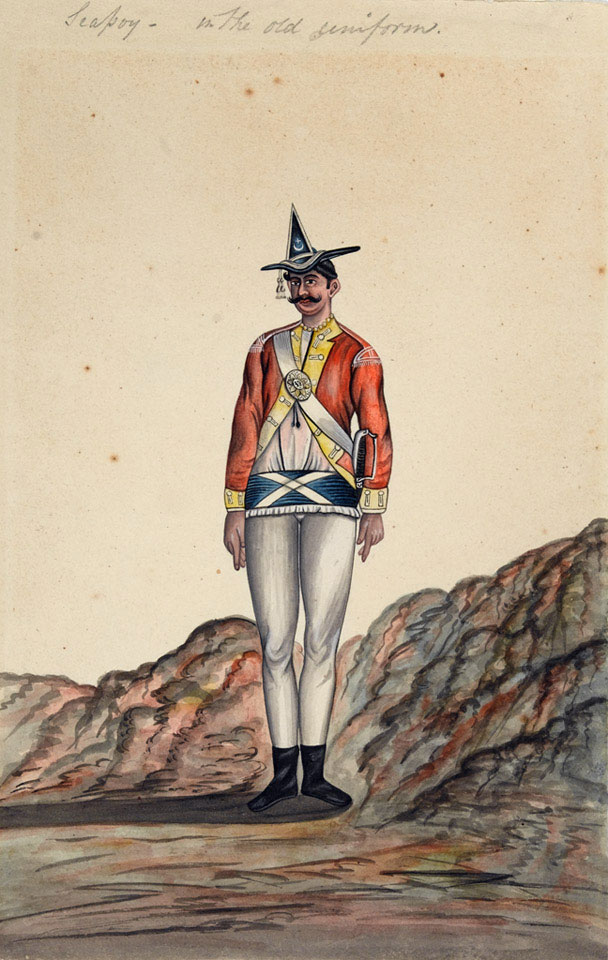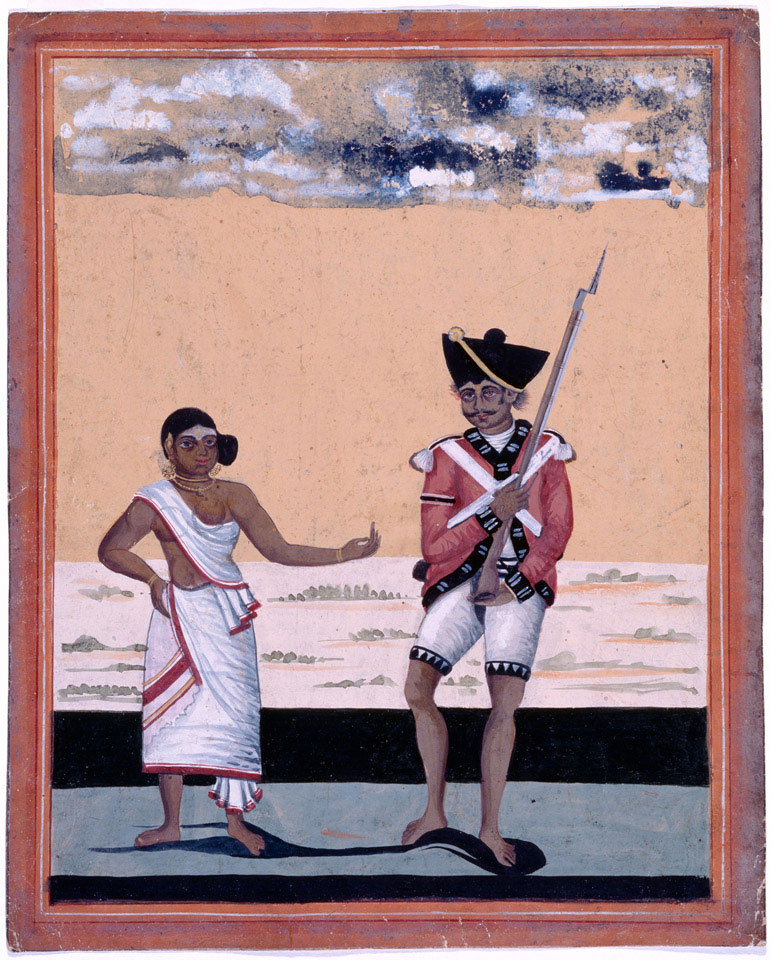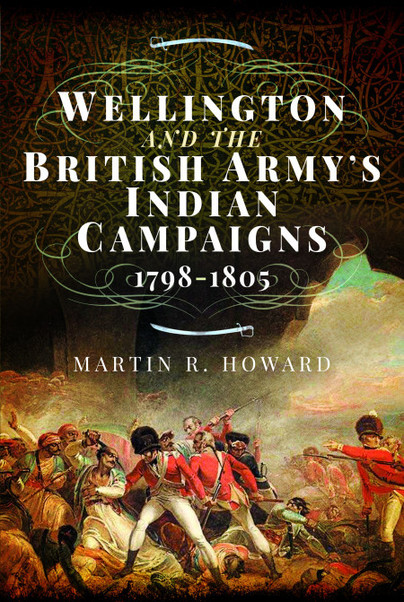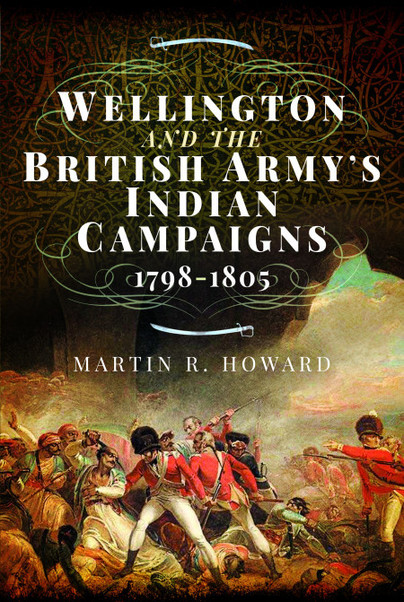Author Guest Post: Martin R. Howard
Sometimes Bliss and Sometimes Woe…
The Sepoys of Britain’s Indian Army 1798−1805
The British Indian Army which conquered much of India under the command of George Harris, Gerard Lake and Arthur Wellesley (the later Duke of Wellington) in the years 1798−1805 was an unlikely mix of men. It was an amalgam of the local East India Company (EIC) Presidency armies and of King’s regiments sent out to the continent from home. Native troops (sepoys) always made up the great majority of the Indian Army. There was no prospect of attracting sufficient European troops to fulfil Britain’s expansionist policies and to protect the EIC’s interests. It was these sepoys who fought against their countrymen – the Mysoreans and the Marathas – in dramatic pitched battles such as Assaye, Delhi and Laswari, and epic sieges such as Seringapatam, Gawilghur and Bhurtpore.
What was it like to be a sepoy in British ranks? Unfortunately, we lack Indian voices from the wars of the late eighteenth and nineteenth centuries. Accounts of the period are necessarily Anglo-centric, based on innumerable state papers, contemporary regulations, and solders’ letters and diaries residing in British archives. Indians were excluded from senior positions in the army and administration thus further removing their actions and thoughts from the historical record.

The existence of just one eyewitness account by an Indian soldier of the period would be of incalculable value. This brings us to the ’memoirs’ of Sita Ram Pande, one of thousands of sepoys who helped the British to dominate nineteenth century India. Sita Ram enlisted into an infantry regiment of the Bengal Presidency Army in 1812 and remained in service until 1860 when he received his pension. He was too late to fight in the Anglo-Maratha Wars of 1803−1805 but he saw action in later campaigns, rising in the ranks to subadar (captain). He was wounded seven times, taken prisoner once, and awarded six medals. He was, so the story runs, persuaded to write his memoirs by Lieutenant-Colonel James Thomas Norgate.
Are the memoirs authentic? Eminent historians have strained to dispel lingering doubts. Critics have pointed to the omissions (Sita Ram does not reveal his regiment), issues with the linguistic style, and the ‘too good to be true’ nature of the adventures. The historian is left with the dilemma of whether to include Sita Ram’s words in any description of sepoy life in the Bengal Army. In the writing of my recent book, Wellington and the British Army’s Indian Campaigns 1798−1805, I decided to be inclusive; even sceptics acknowledge that the memoirs are of absorbing interest and a useful reflexion of the events and attitudes of the period.
Why did young Indian men join the armies of the East India Company? The major incentives were regular pay, a degree of security, and preferential treatment in civilian life. Sita Ram’s motives were apparently more romantic; he imbibed tales of military service from his uncle, a havildar (sergeant) in an infantry regiment. Sita Ram’s account of his introduction to life in the Indian army at Agra is typical of his memoirs. After an introduction to the adjutant, he was taken by his uncle to the regimental doctor’s house.
My uncle told me that the Doctor was married and had several children. He was at home and we were ordered into his presence. A chair was provided for my uncle, but no notice was taken of me so I squatted on the ground. My uncle made me stand up, and told me afterwards that it was bad manners to sit down in the presence of a sahib. After reading the note, the Doctor ordered me to strip, but I was so ashamed I could not move, for there was a memsahib in the room.

Enduring some crude jibes from the doctor and his family, the recruit was eventually pushed into an empty room with reassurance that he would come to no harm.
[the doctor] examined me, by thrusting his hand against my stomach, which nearly made me vomit. Then he opened my eyelids with such violence that tears came into my eyes, and he thumped my chest. After this he pronounced me fit and ceased tormenting me – to my great relief.
A few days later, Sita Ram commenced his drill and, after eight months, he was selected to join the ranks.
British commentaries of the Anglo-Maratha wars suggest that the Company’s sepoy was mostly an effective soldier. Very senior British officers praised their native Indian troops, albeit in a qualified manner. Lake was quick to applaud his sepoys, but equally keen to stress that they needed European support. Wellesley perhaps had low expectations of his native battalions but after the Battle of Assaye he wrote that all the troops had performed admirably; ‘the sepoys astonished me’.
In the British memoirs of the Anglo-Maratha Wars there are many examples of good personal relationships between British and Indian soldiers. Unfortunately, racial stereotyping and British perceptions of racial superiority were to increase in the early 1800s. This was part of a more general hardening of attitudes towards India. There was a deteriorating relationship between European officers and sepoys. Unsurprisingly, sepoys were resentful at being rudely treated by EIC cadets newly arrived in the country and there was a mutual loss of trust and respect. Fighting for the British had never been easy. An old Bombay marching song summed it up.
Sometimes bliss and sometimes woe,
Servant of the English!
As the century unfolded, there was more woe than bliss and sepoy morale fell. Old soldiers like Sita Ram met to discuss the deterioration of their service conditions and to reminisce about past glories.
There were multiple reasons for unrest among the Company’s native soldiers in the first half of the nineteenth century, not least the widening gulf between static pay scales and the cost of living. However, it was largely the combination of British dismissive attitudes and poor man-management that gradually eroded the loyalty of the sepoys and led to large-scale mutiny.

You can order a copy of Wellington and the British Army’s Indian Campaigns 1798-1805 here.


